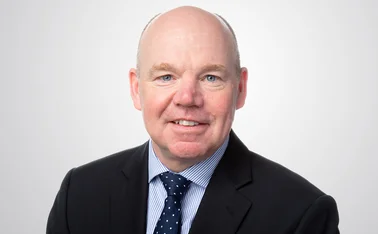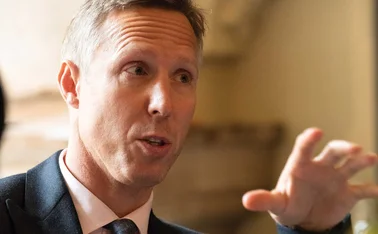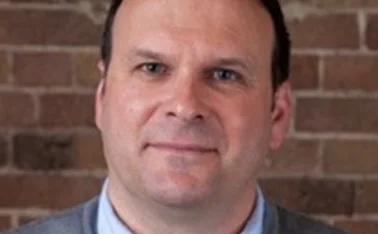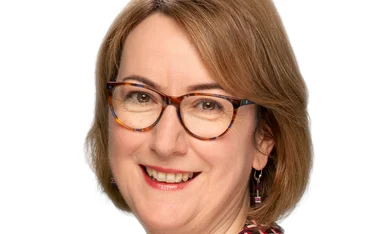
Broking success: Richard Salt, Bell & Co

Stepping up to the crease: Bell & Co’s managing director Richard Salt is ready to bat when it comes to growth plans, specialisms and moving the broker’s office to Derbyshire’s cricket ground
▶ What are the origins of Bell & Co?
It was formed in Derby in 1978, when two insurance company employees left their respective insurers to set themselves up as a broker and took their clients with them.
I started here in 1995 from Norwich Union [now Aviva] and had an opportunity to purchase the firm in 2001.
▶ How did the management buyout (MBO) come about?
At that time the business controlled £4m of gross written premium (GWP) and had 14 staff. The opportunity came about because the two company founders had grown the business to a certain level and then retired in 1993. There was a staff MBO at the time by three shareholders. That didn’t go too well, which led to the opportunity for us to take it on in 2001. Bell & Co have now got to the position where we control £9.5m GWP and have 24 staff.
▶ When did you become a majority shareholder?
In the 2001 MBO there were two majority shareholders, including myself. In 2010, my business partner wanted to exit insurance because he was a little spooked by the recession and had concerns over things like e-trading. I was more optimistic and I believed in broking as a profession.
I led the minority shareholders in a deal to purchase the stock. I own 85% of the business and two colleagues own 15%. I remain managing director of the business. We have kicked on and became chartered in 2011.
We’re looking to specialise more and the initial areas that we’ve picked are SMEs that start to become global businesses, farm and associated business, high-tech engineering, education and associated areas
▶ How have the priorities of the business evolved since 2010?
I wanted to retain the SME department as well as shift our focus for premiums ranging between £20,000 and £250,000 and base our recruitment on that. That has been a good move. Where online trade and the internet is going we’ve developed our offering, which has meant above that level we have attracted people from players like Willis, JLT, Gallagher. They see us as a viable option for their career. This has helped to bring their client base to us.
▶ What is the growth strategy for 2017 and beyond?
We will continue to inform clients of the covers that we firmly believe they need now, such as cyber insurance. A majority of our clients are insuring things that are easily replaceable but we need to better educate them on some of the bigger risks out there.
I want Bell & Co to double in size and for the GWP to grow to £18m-£20m in the next three years. Acquisitions are a possibility as to get to that figure we would have to do at least one. We’ve talked to a lot of brokers over the last 16 years and we’re talking to a couple at the moment but it’s a bit like kissing frogs. We acquired a small one-man band, an AR operation, in 2005.
▶ Does the firm specialise and how is it structured?
We have an SME team that handles client premiums up to £5,000. We have a corporate team that moves on from that level and takes premiums up to £350,000. They are ably supported by the high net worth (HNW) team and a dedicated financial lines department, which covers professional indemnity, directors’ & officers’, employment practices liability, cyber, fraud, employment law and online health and safety.
Financial lines is a very strong growth area for Bell & Co. We’re looking to specialise more and the initial areas that we’ve picked are SMEs that start to become global businesses, farm and associated business, high-tech engineering, education and associated areas.
▶ What is the business’ personal lines offering?
HNW home insurance is very positive for us. We have retained a presence in personal lines motor insurance. We do this for the managing directors of our clients who don’t want to go on GoCompare and don’t mind paying a little more for a quality service.
I see a future in connected home and associated business. We do well on cross selling, so this is definitely an area for us. We have great products and we can get more penetration with our existing client base and new ones.
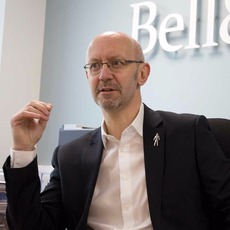
▶ Has being chartered helped the firm?
Yes, but I don’t think it will help as much as in the future. We were the first in Derbyshire to become chartered. In the first couple of years with chartered status it was something that we were, and remain, proud of and banged on about. I don’t know if anybody understood what it was then but they are getting there now.
▶ Bell & Co was a founder member of the Willis Towers Watson Networks. What are the benefits?
It’s a good network. It started in 1999 and has given us different things as the company evolved. In the early days when we did the MBO, Willis helped with the structure and strategy. They recently helped us with the Insurance Act and, as I mentioned before, to work with businesses looking to become global. It’s through working with the network we can offer local people something different.
The key to moving was accessibility for our employees and through talking to the cricket club we found ourselves in their new building last year
▶ Which panel of insurers do you use – any unrated ones?
We use about any insurer beginning with ‘a’ – Allianz, Axa, Aviva. Some of the other companies who we deal with on the new business front and are forward thinking are the Chubb-Ace combination and CNA. We don’t knowingly use unrated insurers.
▶ How does Bell & Co interact with clients and what is your route to market?
We have 3,000 clients and they are all regional. Communication is regular and is an all year round service for our customers. Recommendation is our biggest route to market, that’s face-to-face and we still do direct mailing. But our main line of enquiry is through working with other local professionals.
▶ The business moved to Derbyshire County Cricket Club last September. Does the company have a love for sport?
The key to moving was accessibility for our employees and through talking to the cricket club we found ourselves in their new building last year. It was completed in September 2016. We’ve been insuring this place since 2012 and have a partner relationship with the club. It also leads to more business and connections for us. Additionally, we sponsor a Masters car racing team and that’s a pleasurable situation for our staff. We’ve had things like family race days.
▶ What has been the biggest challenge for the business over the past year?
The last 12 months and the past five years have been pretty good for this business. Market wise, recruitment for growth has been a challenge, I would think most brokers would say that. There are people available but it’s about getting the right people.
▶ How do you feel about regulation? What about the Insurance Act, insurance premium tax (IPT) and Brexit?
In the whole regulation is a good thing and we welcome it. With the Insurance Act, a lot of money and energy has been spent on it and now everybody is just waiting for the first legal tests. IPT is a big issue, it’s a stealth tax and I expect it to rise to 20%. Brexit is a concern only because of the unknown to our customers, especially those trading globally.
Only users who have a paid subscription or are part of a corporate subscription are able to print or copy content.
To access these options, along with all other subscription benefits, please contact info@insuranceage.co.uk or view our subscription options here: https://subscriptions.insuranceage.co.uk/subscribe
You are currently unable to print this content. Please contact info@insuranceage.co.uk to find out more.
You are currently unable to copy this content. Please contact info@insuranceage.co.uk to find out more.
Copyright Infopro Digital Limited. All rights reserved.
As outlined in our terms and conditions, https://www.infopro-digital.com/terms-and-conditions/subscriptions/ (point 2.4), printing is limited to a single copy.
If you would like to purchase additional rights please email info@insuranceage.co.uk
Copyright Infopro Digital Limited. All rights reserved.
You may share this content using our article tools. As outlined in our terms and conditions, https://www.infopro-digital.com/terms-and-conditions/subscriptions/ (clause 2.4), an Authorised User may only make one copy of the materials for their own personal use. You must also comply with the restrictions in clause 2.5.
If you would like to purchase additional rights please email info@insuranceage.co.uk

